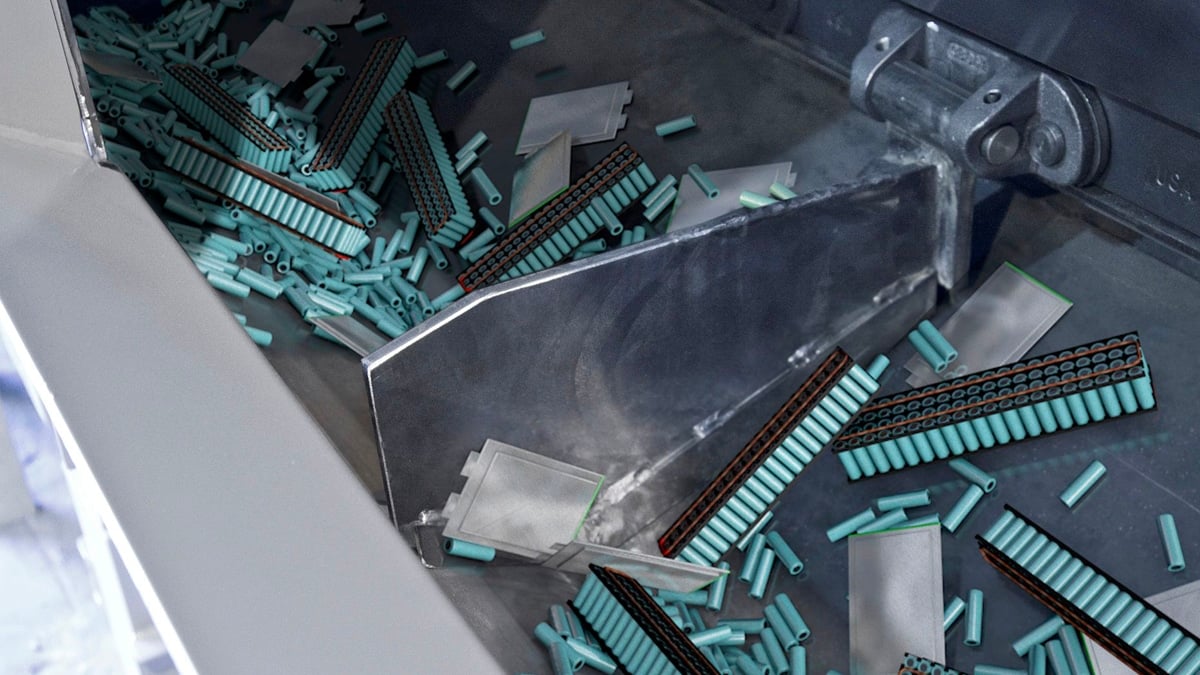
The renewable energy sector is experiencing massive growth. With a major shift underway toward a reliance on clean energy, the industry is on pace to more than double its capacity in coming years. This expansion is part of the plan to achieve net zero-carbon emissions by 2050.
Driven in large part by the increase in popularity of electric vehicles (EVs) and hybrid vehicles (HVs), the renewable energy sector faces challenges both in mining enough raw materials to make products like lithium-ion batteries, and then effectively recycling the components as they reach end of life. Both processes are key to meeting increased consumer material demands—and achieving emissions goals.
While lithium-ion batteries collectively play a major role in the clean energy push, individually they have a finite operating life. And since these batteries cannot be simply thrown away when expired or damaged, recycling becomes the primary option. With each battery replacement in EVs and HVs, special recycling operations must continue to separate reusable materials of each battery circulated back into the battery manufacturing market.
Because of the various tasks involved, facilities planning for lithium-ion battery recycling can best set themselves up for significant cost savings, high production, and increased profits with a holistic approach to equipment selection.
An Overview of Lithium-Ion Battery (LIB) Recycling
The process of LIB battery recycling uses a variety of equipment and technology. Boiled down to the basics, effective recycling involves the following steps:
Keep Things Moving with the Right Equipment
While each facility’s layout and process needs will differ, the types of equipment remain largely the same, including:
Efficient conveying is one of the most critical aspects of battery recycling, as it is required during multiple stages of the process. Without reliable conveyors, operations cannot maintain the necessary production levels to meet demands—which results in significant profit loss.
This makes the selection of liquid-tight or dust tight conveying equipment paramount to achieving production goals for both incoming and outgoing material, and typically includes:
At the end of the mechanical separation process, the material left is referred to as “Black Mass.” Hydrometallurgical and chemical processing are the most common methods for separating the black mass into its constituent materials, such as the cathode and anode as well as the electrolyte. These materials can then be sold to chemical companies and repurposed for battery manufacturing.
Depending on the application, and hydrometallurgical or chemical leaching, these systems will require filtration and separation using nanofiltration, ultrafiltration, vacuum evaporation, and or reverse osmosis to refine metals to more than 99% purity. This is of the utmost importance for operations looking to save on fluid expenses and increase metal scrap value.
Conclusion
Renewable energy is a young industry, and companies are still figuring out how to efficiently recycle products like lithium-ion batteries. This presents a great opportunity to get ahead of projected demands by strategically equipping current and future facilities with the right conveyors, screening systems, and hydrometallurgical equipment for their applications.
Custom conveyors and fluid recycling systems designed to eliminate downtime and handle sensitive material will help operations be in a favorable position for short and long-term success. This is best achieved with a partner who understands sensitive industrial applications and can provide facilities with the right components for every step of the process.
For more information about finding the right conveyors and hydrometallurgical systems for your operation, visit the KMC Global website.